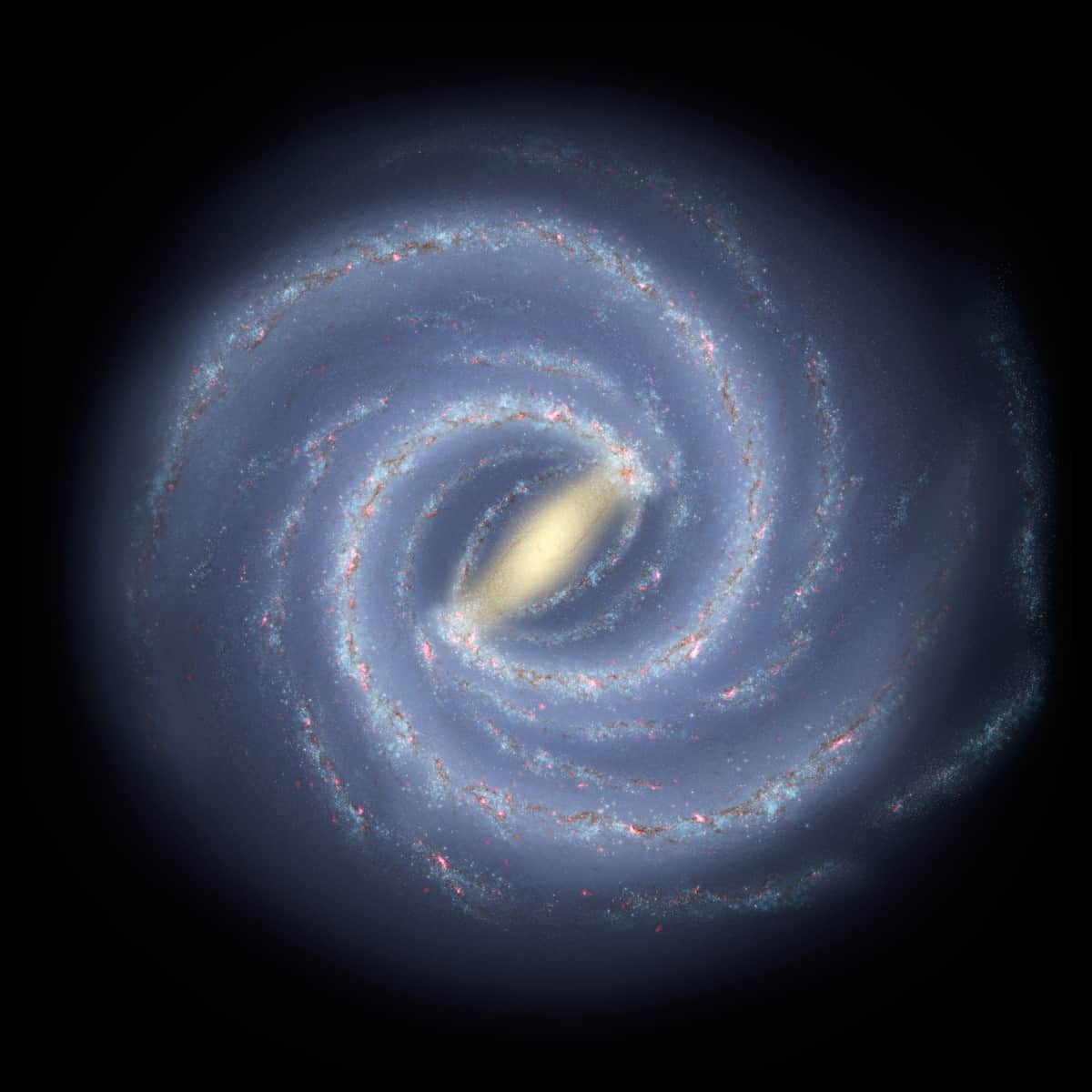
The rate at which Earth’s continental crust builds up goes through cycles, peaking around every 200 million years when the solar system travels through one of the Milky Way’s spiral arms. That is the conclusion of an international team of researchers, who argue that crustal production is boosted when more high-energy comets crash into the Earth. They say that these comets are dislodged from the Oort cloud by the influence of regions of space with dense interstellar clouds.
“As geologists, we normally think about processes internal to the Earth being really important for how our planet has evolved,” says team member and isotope geologist Chris Kirkland of Australia’s Curtin University. “But we can also think about the much larger scale and look at extraterrestrial processes and where we fit in the galactic environment.”
So far, Earth is the only planet that we know has continents and active plate tectonics. These features have helped make Earth hospitable to life because they influence the atmosphere, hydrosphere and biosphere.
Ancient crust
In their study, Kirkland and colleagues analysed zircon crystals deposited in the North American craton in Greenland and the Pilbara craton in western Australia — two regions that preserve some of Earth’s oldest continental crust, which dates to the Archean Eon.
By measuring the decay of uranium within the crystals, the team established a timeline for the formation of the cratons, spanning from around 2.8–3.8 billion years ago. They also looked at hafnium isotopes, which allowed them to identify times of juvenile magma influx associated with crust production. Analysis revealed a longer period, 200-million-year-long oscillation in the data, which correlates with Earth’s motion through the Milky Way. This finding is also mirrored in oxygen isotope data.
More specifically, they found that the observed rate of crustal production tracks the solar system repeatedly passing into the Milky Way’s spiral arms. “Our solar system and the four spiral arms of the Milky Way are both spinning around the supermassive black hole at the galaxy’s centre, yet they are moving at different speeds. The spiral arms orbit at 210 km/s, while the Sun is speeding along at 240 km/s, meaning our solar system is surfing into and out of the galaxy’s arms,” the researchers.
Stellar traffic jam
“You can think of the spiral arms as dense regions that slow the passage of stars, much like a traffic jam, which only clears further down the road,” they said, adding: “This model results in approximately 200 million years between each entry our solar system makes into a spiral arm of the galaxy.”
Every time the solar system makes one of these entries, Kirkland and his team propose that interactions occur between the galaxy’s relatively dense spiral arms and the Oort cloud of icy planetesimals that surrounds the solar system. This increases the rate at which comets are ejected from the Oort cloud, with some of these icy bodies ending up hurtling towards Earth. These comets strike the Earth with considerably more energy than the more frequent meteorites that come from the asteroid belt.
Kirkland points out that this higher energy is important because it results in greater melting of the crust upon impact. “When it hits, it causes larger amounts of decompression melting, creating a larger uplift of material, creating a larger crustal seat.”
Spherule beds
Further evidence linking periods of increased crustal generation with higher rates of comet impacts come in the form of spherule beds. These are deposits containing small spheres formed either directly from molten impact ejecta or rained out from rock and vapour plumes in the wake of an impact event. The researchers note that the known ages of spherule beds around the globe also correspond with the solar system’s movement into the Milky Way’s spiral arms around 3.25–3.45 billion years ago. The dating of additional spherule deposits in the future could provide more evidence to support the hypothesis.
The team hopes that its findings will motivate further investigation of how forces from outside the solar system have shaped the planet on which we live. “It’s very hard to prove these things,” says team member and astrophysicist Phil Sutton of the UK’s University of Lincoln. He adds, “We want to make that link and start the conversation to look at geological processes beyond the Earth, beyond the solar system, and what might drive those. We didn’t just form in isolation.”
The study is described in the journal Geology.



